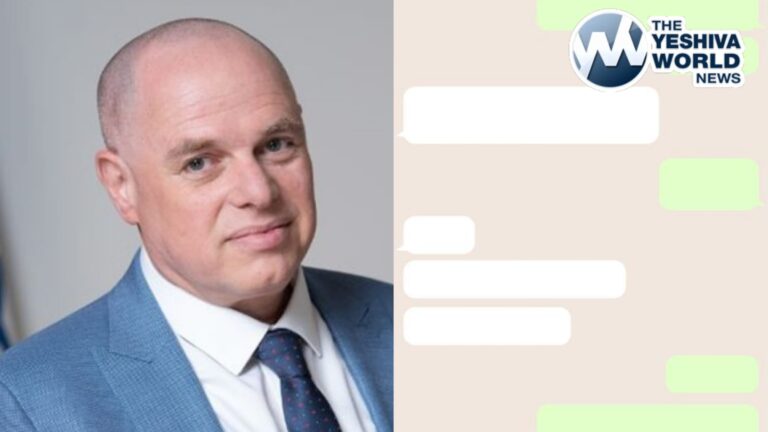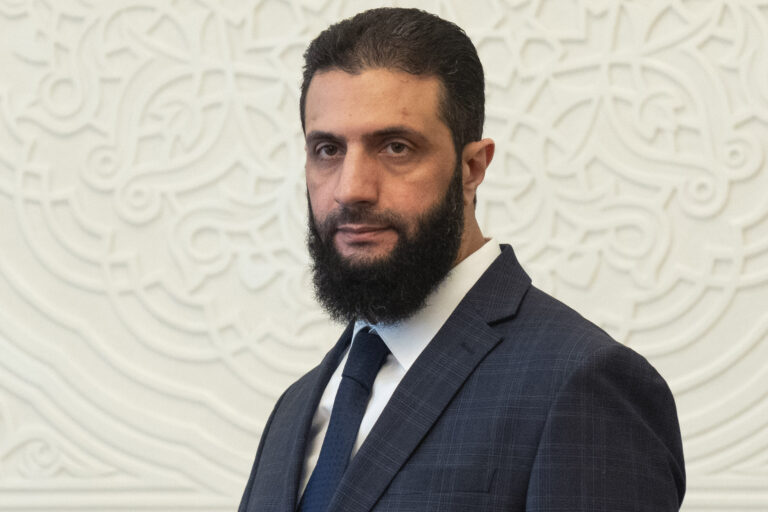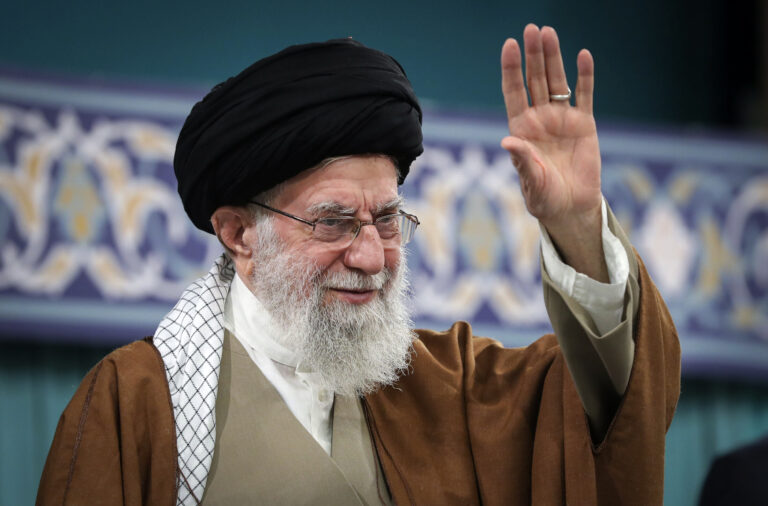With Sukkos approaching, the annual scramble to purchase the perfect set of daled minim is in full swing. However, this year, as families face major financial struggles, there’s renewed frustration over skyrocketing prices — particularly of esrogim, which can often come with a hefty price tag.
I’ve heard grumblings about wholesalers and direct-to-consumer sellers placing exorbitant markups on esrogim, pushing the prices far beyond their true market value. While I can’t personally confirm or debunk these claims, I think it’s worth pointing out another factor contributing to these rising prices that no one seems to be talking about: the role of tzedakos.
For the past several years, tzedakos have made it a standard practice to gift their biggest donors with beautiful esrogim before Sukkos. What was once an occasional gesture has now become so common that it’s almost unheard of for a major tzedaka to skip this part of their donor appreciation routine. And while the gesture is well-meaning and undoubtedly appreciated by the donors, it’s having unintended consequences on the broader public.
I personally know of one wealthy individual who has already received over two dozen esrogim this season from various tzedakos. Two dozen! And this isn’t an isolated incident. These tzedakos often reserve the most beautiful, high-quality esrogim for their top-tier donors. The result? The nicest esrogim are taken off the market before the average consumer even has a chance to see them. This leaves regular buyers with a smaller selection of high-quality esrogim, which, naturally, drives prices up. When demand remains strong but supply diminishes, basic economics tells us that prices will rise—and that’s exactly what’s happening.
Of course, I understand why tzedakos are doing this. Donors deserve recognition for their generosity, and an esrog is a thoughtful and symbolic gift, especially in the lead-up to Sukkos. It’s a tangible way for tzedakos to express their gratitude to the people who make their work possible. But the broader impact of this practice on the community cannot be ignored.
As it stands, the tzedakos are inadvertently contributing to the price inflation that is hitting families where it hurts. Many families already struggle with the cost of preparing for yom tov, and the added financial burden of purchasing a nice esrog is becoming untenable for some. A yom tov that should be filled with joy, celebration, and mitzvos is instead overshadowed by the stress of making ends meet.
To be clear, the tzedakos are not acting maliciously. Their intentions are good, and they’re right to show appreciation to their donors. But I would argue that there are other ways to express gratitude without removing the most sought-after esrogim from the general market. Perhaps a beautifully crafted letter of thanks or a different type of gift could be given to donors instead—something that doesn’t impact the price of an item that is supposed to be accessible to all.
Every Jew, regardless of financial situation, should be able to fulfill the mitzvah with pride, holding a beautiful esrog in their hands. By reserving the finest esrogim for a select few, we are unintentionally creating a divide that goes against the very spirit and camaraderie inherent in every yom tov.
To the tzedakos giving esrogim to their donors: please, for the sake of the broader community, consider finding another way to show your appreciation. Your work is vital, and your donors are crucial to your success, but the unintended consequences of this practice are too great to ignore. In a time when many are struggling financially, it’s more important than ever to think about how our actions—no matter how well-intentioned—affect the klal.
Signed,
A Yid Who Doesn’t Get Free Esrogim
The views expressed in this letter do not necessarily reflect those of YWN. Have an opinion you would like to share? Send it to us for review.












30 Responses
This was written by someone who apparently knows nothing about business.
I have sold Arba Minim for any years & while the markup is high the risk is even higher.
Consider the following factors:
– The merchandise expires giving you a very small timeframe to sell, an esrog that costs you $100 wholesale is worth $0 on the first day of Yom Tov. Typically these are only sold in cases of 50 – so often times the seller needs to cover his risk and sell these for enough money to cover his expiration loss.
– Labor costs, selling arba minim takes significant skill and multiple workers, most buyers would be surprised how quickly this can add up.
– It is also time-consuming, meaning if you have a regular 9-5 job you probably cant sell & therefore if you are the type of person to get involved in a seasonal business you need the income to cover more than just the 3 weeks of the season. This might be the most determinative factor as it applies to the workers as well, typically they get paid above average because it’s seasonal.
– All of the above is risks that a retailer takes, importers have an additional set of risks and costs (air shipments, customs clearance, not to mention that if they find a bug they can burn thousands of esrogim)
– Growers also have enormous costs, just the pesticides cost millions of dollars per year for the large growers. They also have to hire seasonal skilled workers for the sorting and packaging process.
The affect of tzedakah organizations buying nice Esrogim is marginal & doesnt have any significant affect on supplies. This notion is laughable.
The writer also apparently knows nothing about how jews do business; let’s be honest when one yid notices another making a dollar he thinks for many hours how about he can do the same thing for 50 cents, if you think our markup is out of touch and exuberant there’s nothing stopping you from competing.
Chag Same’ach
The sellers are business people no different than the grocery store or the shoe store. They have a disadvantage that they have a small window within which to make their money. At the same time if you are in the Brooklyn area, every major avenue has esrog sellers, selling complete sets for $30.
These organizations are buying wholesale just like any other wholesaler.
They are only buying the highest end Esrogim which are most likely way out of your budget (think $600+ retail).
This is not significantly affecting the price of the Esrogim you are likely buying.
I sold Daled Minim a number of years back. The cheapest sets costed me around $16-18 wholesale. I sold everything at a 100-180% markup. After calculating all of my expenses, and selling a good few hundred sets (some going for as much as $135), I made about $10/hour for the hours I was selling Esrogim. That doesn’t include the time I spent sourcing and sorting Esrogim or the value of the risk I took. It’s not as lucrative as many people assume.
Now to be clear, there are people who make a nice living selling Esrogim, but that is far from the rule.
Ultimately, the market forces at play affect the cost and quality of the esrogim.
If everyone only wants perfectly clean Esrogim, the labor cost to the Pardes goes up as they will have more high skilled laborers, giving extra TLC to more Esrogim.
if people are more cost conscious and want Esrogim that cost less and aren’t as nice, then the Pardes will decrease their labor cost, and there will be less Esrogim getting that level of TLC.
Be like me. But a cheap one. You can get a very good esrog from a market for $20-25.
And don’t buy fancy cuts of meat. Cheap cuts or chicken.
Where is the chiyiv to own a $250 esrog?
Stop thinking what rich people are doing! It’s not relevant to you, unless you are rich.
Live within your means. Follow your own Rav and Shulchan Aruch.
You’ll be fine
Not sure about the claims of this writer. But there is truth to the fact that all sorts of tzedakos purchase lavish, expensive gifts for their large donors. This is legendary, and is worthy of some examination. The wealthy are already capable of buying these objects for themselves. The gesture of hakaras hatov that is needed is just a gesture, not something expensive. If these tzedakos truly wish to be righteous, they should give these gifts to those who can otherwise not afford them. For the wealthy donors, there should be something token as a sincere message of appreciation.
Sorry i dont know which area you are talking about where donors get free Esrog. I live in BP and my father is one of the great Bal Tzedukah and he never received a Free Esrog.
And the mitzveh of an Esrog is Ilekachtem is to buy your own Arba Minim therefore i can not visualize any donor accepting a free Esrog. No where in the Torah is mentioned that you have to buy a poor person Arba minim only Matzohs and Wine for Pesach and Matunes Luevyonim on Pirim. Arba Minim can be shared by Hundrends of people.
Maybe it is becoming a new custom but i have not heard it in BP, Wmsbg., KJ, Monsey.
There is IRS form 990 that shows how much charities spend on actual tzedoka v. overheard, including marketing costs. High value may make you think whether you want to subsidize poor people or marketing people. Low value hopefully means efficient tzedoka and not bad accounting.
@the little I know:
These organizations are are buying the Esrogim wholesale directly from the Pardes.
The gesture isn’t so much about providing an Esrog that the donor could otherwise not afford, but about providing a service of choosing the donor a beautiful Esrog that they wouldn’t have time to find otherwise.
For us plebeians money is our most valuable commodity.
For the donor class, time is their most valuable commodity.
The whole argument is based on a fallacy that poor and middle class people are in the market for high end etrogim which I believe most are not…. There’s plenty of inexpensive and still kosher etrogim on the market. Why are u making a whole story out of it? That said, I think organizations need to trim their budgets. Any responsible donor would like to see NO money wasted, certainly not on people who don’t need it. Instead have the kollel/yeshivah/volunteers do something inspirational or pray in the donor’s zechut and write them something nice about it. Trust me this will make them much happier.
There is not a shred of truth to what this writer is stating. I bought my set this year for the same price as last year and its quality is no less than the prior year. No evidence of inflation. Now, if you want to speak in general as to why a set of Arab minim should ever cost the consumer more than 50 dollars, that would be a worthwhile discussion.
I was not aware that tzedakah organizations purchase Arab minim for its wealthy donors. Can someone confirm if this is true?
I am seriously considering including the following statement with my future donations to tzedakah organizations: “ Are funds collected used to purchase Arab minim for wealthy donors?”
Open Letter: Unveiling the Hidden Forces Behind the Skyrocketing Esrog Prices
Dear Chashuve Kehilla,
As Sukkos draws near, we all prepare ourselves to fulfill the beautiful mitzvah of Arba Minim, including acquiring a mehudar Esrog. However, every year we are faced with the same daunting challenge—the increasingly exorbitant prices of Esrogim, which put a heavy strain on our families’ Yom Tov budgets. It’s time to confront the uncomfortable reality: behind these unreasonable prices lurk undercover Russian middlemen, whose involvement is inflating costs well beyond what’s reasonable.
For some time now, we’ve watched Esrog prices rise inexplicably. While it’s true that weather patterns and other agricultural factors play a role, they do not explain the steep price hikes we’ve experienced. The real issue lies in a shadowy group of Russian middlemen who have infiltrated the supply chain, particularly from Eastern Europe, and are manipulating the market.
These middlemen aren’t just handling the transportation of Esrogim; they have established near-total control over the export process. By artificially limiting the supply and creating unnecessary delays, they jack up prices to line their own pockets, leaving the tzibbur struggling to afford this essential mitzvah. This unethical behavior goes against the Torah values we cherish, transforming what should be a sacred experience into a financial burden.
We’ve heard from many who deal directly with the farmers. They’ve shared troubling stories of how these intermediaries operate, creating shortages where none should exist, holding back shipments, and setting prices far above what’s justified by the costs. Yet these middlemen operate in the shadows, their tactics largely unnoticed by the broader community.
So, what can we do to combat this? As a tzibbur, we must demand greater transparency in the Esrog market. It’s crucial for suppliers to openly share the details of their supply chains so that we can understand how prices are being set. Even better, we should foster direct relationships with the farmers who grow these precious fruits, bypassing the unnecessary middlemen. We, as a kehilla, can initiate direct-import initiatives that benefit everyone, ensuring fair pricing without compromising on quality.
Additionally, we should consider supporting local sources and alternative regions that grow Esrogim, which would reduce our reliance on these monopolized routes. By expanding our options, we can weaken the grip that these Russian middlemen have on the market.
The time has come for our rabbanim, askanim, and community leaders to take a stand. Together, we can advocate for more affordable and transparent Esrog options, ensuring that every yid can fulfill this special mitzvah b’simcha, without financial strain. Let’s not allow the greed of a few to overshadow the kedusha of our Sukkos. Instead, let’s work together to restore the joy and spiritual upliftment that comes from a mitzvah done properly and affordably.
May we be zocheh to a Yom Tov of true simcha and an aliyah in all our mitzvos.
With bracha and hatzlacha,
A yid who also has access to ChatGPT
Not a fan of the exorbitant prices. But I can’t imagine the gvir will keep all 20 esrogim. And there (sadly) aren’t all that many such gvirim. So I don’t see how supply/demand is affected.
I don’t know if this is supposed to be a joke or not but it’s complete nonsense. The amount of esrogim being given by these organizations vs. the popular demand for a nice esrog is so marginal there’s no way it affects the supply/demand in any significant way whatsoever. The numbers are way off.
I give a lot of charity and never got one esrog lol. Either way, even if it’s something that is being done with other philanthropists,how many are there already? not even close to make a dent on the supply and demand so this is way out of touch with reality.
Go buy a kosher set for $30. They’re all over the place stop complaining and making an issue out of nothing.
Back in Europe, there was **ONE** Arba Minim for an entire synagogue,
that was shared by many families, because most families did not have one.
Maybe we could save money by doing that again?
Nothing is above supply and demand. Nothing. Unless it’s a monopoly or a cartel, which it is not.
this article is absurd on so many levels.
even if 2000 estrogim go to donors nationwide, that won’t effect market rates in the US!
everyone in brooklyn can get a “kosher l’bracha” for $30 or for $10 at your local jewish supermarket sold as decorations.
“Wholesalers and direct-to-consumer sellers placing exorbitant markups on esrogim, pushing the prices far beyond their true market value”
The Yid who is kvetching about not getting free esrogim obviously is clueless about what is meant by “true market value”. Obviously, the “true market value” of any product is what a willing buyer and seller will agree upon at any moment in time. I just went online and literally found multiple ads offering arba minim sets for $50 or less. Yidden who shop just after Rosh Hashanah will find it very easy to find nice esrogim selling online for less than $100 and still feel they were yotzeh their obligation of hidur mitzvah.
Square Root,
This also took away a lot of parnassah.
Usually a Shul would purchase 3 sets. One for the Rabbi, one for the Chazzan & one for the Kehilla.
The Shamus would go around to people’s houses on Chol Hamoed so they could bentch lulav & they would tip him. This was a big part of his parnassah.
This reminds me of the scandal from years ago.
A friend went into the “Charoses” business.
He invested millions in created Charoses for the Sedarim. Every Kosher (& non-Kosher) supermarket carried his product.
He planned on making millions on this deal.
One night I saw him sitting alone in Shul sobbing. I asked what was wrong.
He replied, “I’m ruined, absolutely ruined! My Charoses lost 95% of its value. Instead of ordering more the stores tell me they can’t give it away.”
I asked who was responsible for the collapse of his business & through teary eyes he said, “The Telz Yeshiva!”
The tzedokos must be giving the gevirim tons of matza, because the price of matza has skyrocketed. When the tzedokos give away so much matza, the supply dwindled, and with so few matzos left, the price inflates beyond the reach of an average income earner.
Have you noticed the price of cream cheese? Crazy! The tzedokos are giving the gevirim cheesecakes for Shavuos. Some gevirim get a few dozen cheesecakes for Shavuos. On gevir showed me his entire garage filled with cheesecakes (he asked me how to dispose of them without baal tashchis). This drives up the price of cream cheese. There is a limited amount of cream cheese produced. When so much cream cheese is squandered on the gevirim, it raises the price, making cream cheese too expensive to be mekayum Shavuos k’din. Tzedakas are destroying my Kabalas Hatorah!
Actually, the high price of esrogim is not the fault of tzedakas. IT’S CHABAD’S FAULT!! They buy so many esrogim for their “sukka mobiles” and campus sukkos. They give away to every shmendrik an esrog for sukkos. It leaves so few esrog for the real heimish yidden that the prices shoot up. Chabad is destroying the supply of esrogim. Their kiruv of those lost yidden is causing real yidden to have hardship in buying an esrog. Terrible!!
I asked the guy for the nicest esrog he had. He gave me one and told me it’s $400. I said oh no you think I’m gonna go around being embarrassed by such a cheap esrog. So I paid him $2000 for it.
The writer thinks that the esrog is given to show appreciation to the donors. It is given so the donors will continue funding them.
There is a point where hidur mitzvah reflects more on the gavah of the buyer who parades around the shul showing off his $500+ esrog from Calabria nestled in a beautiful sterling silver box and is another nail in the coffin of gashmiyus v. ruchniyus. Much bigger mitzvah to get a “nice” esrog and make a small contribution to the funds in most shuls that subsidize the purchase of arba minim for those less fortunate . I’m not sure where Chazal bring down a chiyuv for ALL yidden to have an equal opportunity to buy the “most beautiful” esrogim at whatever price the buyer (not the seller) believes is a “fair market price”.
The weak dollar is a problem. While a weak dollar is good for US exports, it makes imports more expensive. Also esrog farming can not be easily automated, and labor costs are increasing world wide. We Yidden have no control of international monetary policies or policies impact the labor supply.
The good news is that if “Global Warming” is real, it will soon be possible for many Americans to grow your own esrog (just as many people grow at least some of their own aravos), and with DNA testing you can confirm that the esrog in genuine .
Akuperma,
“We Yidden have no control of international monetary policies”
Most of the world believes otherwise.😉
The problem is that we use the esrog in public at shul, while we eat morror on pessach in the privacy of our homes. Imagine the reverse: if we would need to eat morror in shul, everyone would have the largest possible shiyur of the most potent morer…while the esrog used in private at home would be barely kosher!